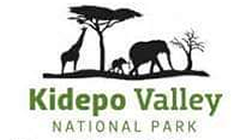The attractions in Kidepo National Park are diverse and they are the main reason for most visits in the park. Located in the Northeastern corner of Uganda, Kidepo Valley National Park was founded in 1962 and sits on land area measuring up to 1442sq.kms making it one of Uganda’s large wildlife parks. It straddles within the semi-arid region and it is without doubt that it experiences mainly the semi-arid climate with heavy rains recorded from April to September.
Within Kidepo National Park, there are 2 scenic rivers Kidepo and Narus Rivers, these are seasonal rivers. During the dry season, they dry and only wetlands remain the main source of water for park’s animal species often confine around the Narus Valley.
Some of the best things to see in Kidepo Valley National Park;
Wildlife/Animals
Wildlife species are Kidepo National Park’s top attractions and prides itself as a home to about 80 mammal species. They include 4 of the big 5 game including the Lions, Leopards, Buffaloes, Elephants; Zebras, Bohor reed bucks, Rothschild giraffes, Jackals, Hyenas, Oribis, Warthogs, Elands, Cheetahs, Kudus and occasionally the white eared Kobs are sighted on extreme site nearby South-Sudan.
Mammals
The park has over 80 mammalian species with around 28 of them being not found in any other Ugandan National park. These include Carcal, Bat-eared Fox, Klipspringers, and Cheetahs. Other mammals include Elephants, Common Zebras, Buffaloes, Bohor Reedbucks, Waterbucks and Kongoni, Spotted Hyenas, Leopards and Lions, Oribis, Guenther’s Dik Dik, Senegal Galagos, Side striped Jackals among others.
Birds
The park is blessed with a number of bird species which include Silver birds, Yellow-billed Shrikes, Vinaceous Doves, Hoopoes, Nubian Woodpeckers, Mosque Swallows, Starlings, Scarlet-chested Sunbirds, Little Weavers, Red-cheeked Cordon-blue swallows, Yellow-rumped Seed eaters, Sand grouses, Clapperton’s Francolin, Black Coucal, African Mustached and Broad-tailed Warblers, Marsh Tchagra and Crimson-rumped Waxbill among others.
The Morungole Mountain
Mt. Morungole lies in Kidepo NP rising 275m high, crossed by the park’s 2 rivers of Kidepo and Narus rivers. It is an exceptional hiking spot and also the best access point to IK community on its summit.
For all the adventurous tourists interested in hiking, Kidepo valley national park is a also a very good tourism destination for mountain hiking especially around the Morungole mountain. Hiking this mountain provides great views of the surrounding environments and there no need to fear as hikers are usually protected by armed rangers. You can combine cultural and hiking experiences while on Mt. Morungole hike.
The Narus Valley
Narus Valley is one of interesting sites Kidepo Valley National Park (KVNP) you shouldn’t miss visiting. Being the only place with water even during the dry season, the Narus valley is one-place tourists’ in Kidepo valley national park should not miss visiting. While here, tourists will not miss seeing the major animals in the national park.
It is the most endowed area with wildlife including large concentration of Buffaloes, Elephants. It is an area most explored during the guided game drives in Kidepo Valley National Park, Uganda.
Kanangorok Hot springs
Kanangorok Hot Springs offer the most impressive views of beautiful mountains like Lomej Hills. The hot springs lie 11kms off from Kidepo River and you navigate through thickets, shrubs etc to access these natural wonders. They are powerful natural features noted to have boiling rate of about 50 degrees celsius. Also, while on your tour, you can enjoy sight of wildlife, birds like ostriches.
Lomej Hills
Lomej Hills straddle just a short distance off Kidepo National Park headquarters and remarkably the best spot worth visiting. These are the best spots for you to explore diversity of birds and also sight the mountain reedbucks.
Unique IK & Karamajong cultures
Cultural experiences are a must to enjoy while on Kidepo Valley NP and with no doubt unique attraction. Meet the Karamajong and IK people and explore distinct cultures, traditions etc.
